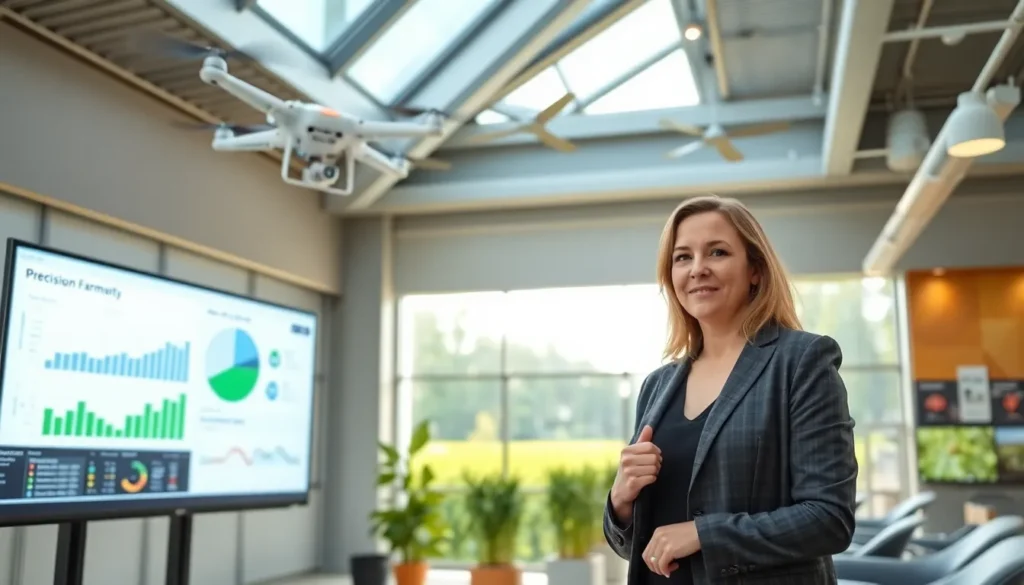The agricultural sector is experiencing a technological renaissance, with innovations blossoming faster than you can say “sustainable farming.” Imagine a world where farmers can predict crop yields with surgical precision or use drones to scout their fields without breaking a sweat. Emerging technologies in agriculture are not only sprouting up, but they’re also revolutionizing the ways farming is done, making it more efficient, profitable, and environmentally friendly. So, grab your sun hat and join us on this journey through the fields of futuristic farming.
Table of Contents
ToggleOverview Of Emerging Technologies

Emerging technologies in agriculture encompass a wide array of innovations designed to enhance farming efficiency and sustainability. From new tools to data-driven techniques, these technologies are fundamentally altering how farmers interact with their land, crops, and livestock. The importance of these advancements cannot be overstated: they address critical challenges such as food security, environmental degradation, and climate change. As we explore various facets of these technologies, it’s clear they serve as more than just gadgets: they represent a paradigm shift in agricultural practices, adapting to the demands of a growing global population.
Precision Agriculture and IoT
Precision agriculture is a game changer, utilizing IoT technology to enhance crop management. By deploying sensors throughout the fields, farmers can collect a plethora of data on soil conditions, moisture levels, and nutrient availability. This data-driven approach enables them to apply water, fertilizers, and pesticides precisely where they are needed, rather than blanket-spreading them over entire fields. Not only does this save money, but it also minimizes the environmental impact. The Internet of Things (IoT) seamlessly connects devices, allowing farmers to monitor and control their operations remotely, giving them unprecedented access to real-time information.
Drones and Aerial Imaging
Drones have become the eyes in the sky for modern-day farmers. Equipped with advanced cameras and imaging technology, these flying machines can capture detailed aerial views of crops, helping farmers to monitor health, spot issues, and assess growth from a bird’s-eye perspective. Aerial imaging facilitates rapid identification of pest infestations or water stress, enabling farmers to respond swiftly. Also, drones can create detailed maps that assist in planning, planting, and managing crops more effectively. Their ability to cover large areas in a short time reduces time and labor costs, proving that sometimes it’s good to have an extra pair of wings.
Biotechnology and Genomics
Biotechnology is at the forefront of agricultural innovation, with genomics playing a crucial role in developing crop varieties that are resilient to pests, diseases, and climate fluctuations. Scientists use gene editing techniques like CRISPR to enhance desirable traits in plants, such as drought resistance and increased nutritional value. This technology could be a game changer in addressing global food shortages. By optimizing the genetic framework of crops, biotechnology also minimizes the need for chemicals, aligning with sustainable farming goals. The combination of plant science and technology offers a promising roadmap for food production to keep pace with increasing demands.
Artificial Intelligence and Machine Learning
Artificial Intelligence (AI) and Machine Learning (ML) are reshaping the agricultural landscape by enabling more precise decision-making processes. These technologies analyze vast amounts of data from various sources, predicting weather patterns, recommending optimal planting times, and even assessing crop yields. AI tools can support farmers in developing risk management strategies based on predictive analytics, helping to mitigate losses before they occur. This intelligent approach not only streamlines operations but also enhances productivity and efficiency while fostering a sustainable farming model. In an era where data is king, AI and ML help farmers reign supreme.
Sustainable Practices and Innovations
Sustainability lies at the heart of modern agriculture, with new technologies promoting eco-friendly practices. Techniques such as vertical farming and hydroponics allow for crop production in urban settings with minimal land usage and resource consumption. Also, renewable energy sources such as solar panels are increasingly powering agricultural operations, reducing dependency on fossil fuels. Innovations like biofertilizers and biopesticides are also gaining momentum, aligning with sustainable practices while maintaining crop health. Farmers are now adopting innovative practices driven by technology, showing that farming can indeed be productive and sustainable.
Challenges and Future Directions
Even though all these advancements, the adoption of emerging technologies in agriculture isn’t without its challenges. High initial costs, lack of training, and data security concerns pose significant hurdles for many farmers, particularly in developing regions. Also, integrating different technologies can create a complex landscape that some may find daunting. Future directions will likely focus on enhancing accessibility and affordability of these technologies, along with improving education and training programs. Collaborations between tech companies, agricultural institutions, and farmers are essential to pave the way for widespread adoption. The golden era of agriculture is here, but navigating through the foggy uncertainties will need everyone’s cooperation.





